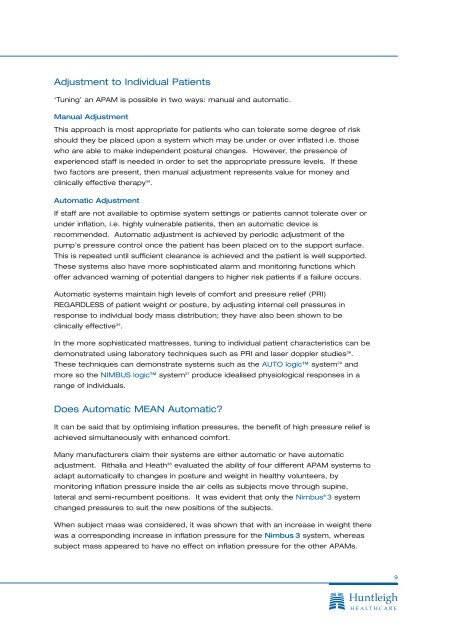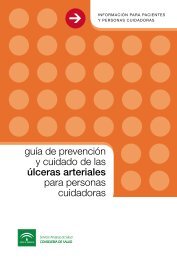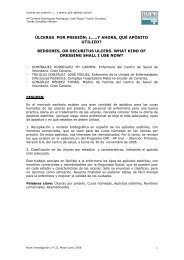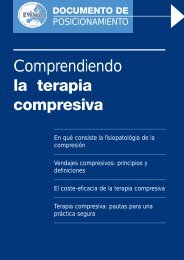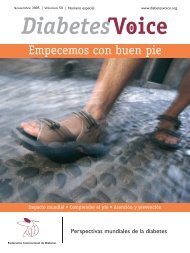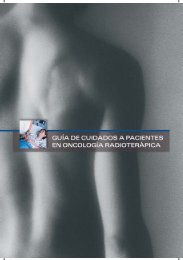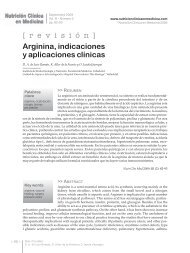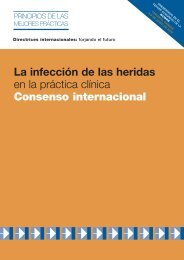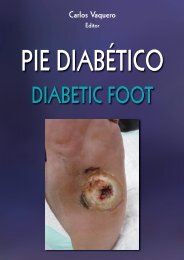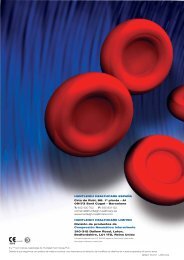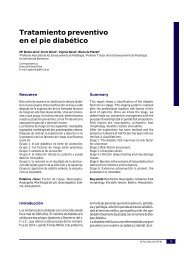HUNTLEIGH HEALTHCARE LIMITED Pressure Area Care Products ...
HUNTLEIGH HEALTHCARE LIMITED Pressure Area Care Products ...
HUNTLEIGH HEALTHCARE LIMITED Pressure Area Care Products ...
You also want an ePaper? Increase the reach of your titles
YUMPU automatically turns print PDFs into web optimized ePapers that Google loves.
Adjustment to Individual Patients<br />
‘Tuning’ an APAM is possible in two ways: manual and automatic.<br />
Manual Adjustment<br />
This approach is most appropriate for patients who can tolerate some degree of risk<br />
should they be placed upon a system which may be under or over inflated i.e. those<br />
who are able to make independent postural changes. However, the presence of<br />
experienced staff is needed in order to set the appropriate pressure levels. If these<br />
two factors are present, then manual adjustment represents value for money and<br />
clinically effective therapy 34 .<br />
Automatic Adjustment<br />
If staff are not available to optimise system settings or patients cannot tolerate over or<br />
under inflation, i.e. highly vulnerable patients, then an automatic device is<br />
recommended. Automatic adjustment is achieved by periodic adjustment of the<br />
pump’s pressure control once the patient has been placed on to the support surface.<br />
This is repeated until sufficient clearance is achieved and the patient is well supported.<br />
These systems also have more sophisticated alarm and monitoring functions which<br />
offer advanced warning of potential dangers to higher risk patients if a failure occurs.<br />
Automatic systems maintain high levels of comfort and pressure relief (PRI)<br />
REGARDLESS of patient weight or posture, by adjusting internal cell pressures in<br />
response to individual body mass distribution; they have also been shown to be<br />
clinically effective 35 .<br />
In the more sophisticated mattresses, tuning to individual patient characteristics can be<br />
demonstrated using laboratory techniques such as PRI and laser doppler studies 36 .<br />
These techniques can demonstrate systems such as the AUTO logic system 29 and<br />
more so the NIMBUS logic system 37 produce idealised physiological responses in a<br />
range of individuals.<br />
Does Automatic MEAN Automatic?<br />
It can be said that by optimising inflation pressures, the benefit of high pressure relief is<br />
achieved simultaneously with enhanced comfort.<br />
Many manufacturers claim their systems are either automatic or have automatic<br />
adjustment. Rithalia and Heath 38 evaluated the ability of four different APAM systems to<br />
adapt automatically to changes in posture and weight in healthy volunteers, by<br />
monitoring inflation pressure inside the air cells as subjects move through supine,<br />
lateral and semi-recumbent positions. It was evident that only the Nimbus ® 3 system<br />
changed pressures to suit the new positions of the subjects.<br />
When subject mass was considered, it was shown that with an increase in weight there<br />
was a corresponding increase in inflation pressure for the Nimbus 3 system, whereas<br />
subject mass appeared to have no effect on inflation pressure for the other APAMs.<br />
9


